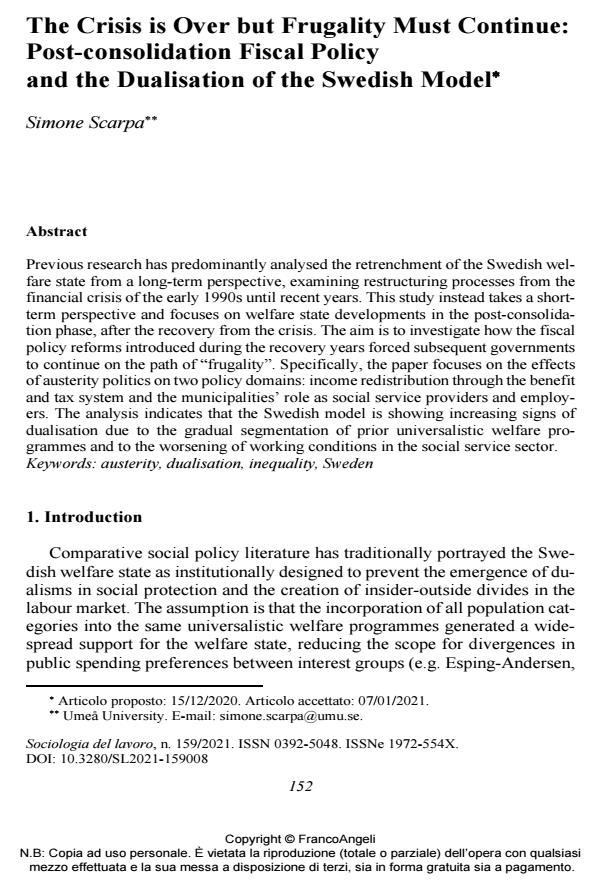The Crisis is Over but Frugality Must Continue: Post-consolidation Fiscal Policy and the Dualisation of the Swedish Model
Journal title SOCIOLOGIA DEL LAVORO
Author/s Simone Scarpa
Publishing Year 2021 Issue 2021/159
Language English Pages 20 P. 152-171 File size 246 KB
DOI 10.3280/SL2021-159008
DOI is like a bar code for intellectual property: to have more infomation
click here
Below, you can see the article first page
If you want to buy this article in PDF format, you can do it, following the instructions to buy download credits

FrancoAngeli is member of Publishers International Linking Association, Inc (PILA), a not-for-profit association which run the CrossRef service enabling links to and from online scholarly content.
Previous research has predominantly analysed the retrenchment of the Swedish welfare state from a long-term perspective, examining restructuring processes from the financial crisis of the early 1990s until recent years. This study instead takes a short-term perspective and focuses on welfare state developments in the post-consolidation phase, after the recovery from the crisis. The aim is to investigate how the fiscal policy reforms introduced during the recovery years forced subsequent governments to continue on the path of "frugality". Specifically, the paper focuses on the effects of austerity politics on two policy domains: income redistribution through the benefit and tax system and the municipalities’ role as social service providers and employers. The analysis indicates that the Swedish model is showing increasing signs of dualisation due to the gradual segmentation of prior universalistic welfare programmes and to the worsening of working conditions in the social service sector.
Keywords: Austerity, dualisation, inequality, Sweden
Simone Scarpa, The Crisis is Over but Frugality Must Continue: Post-consolidation Fiscal Policy and the Dualisation of the Swedish Model in "SOCIOLOGIA DEL LAVORO " 159/2021, pp 152-171, DOI: 10.3280/SL2021-159008